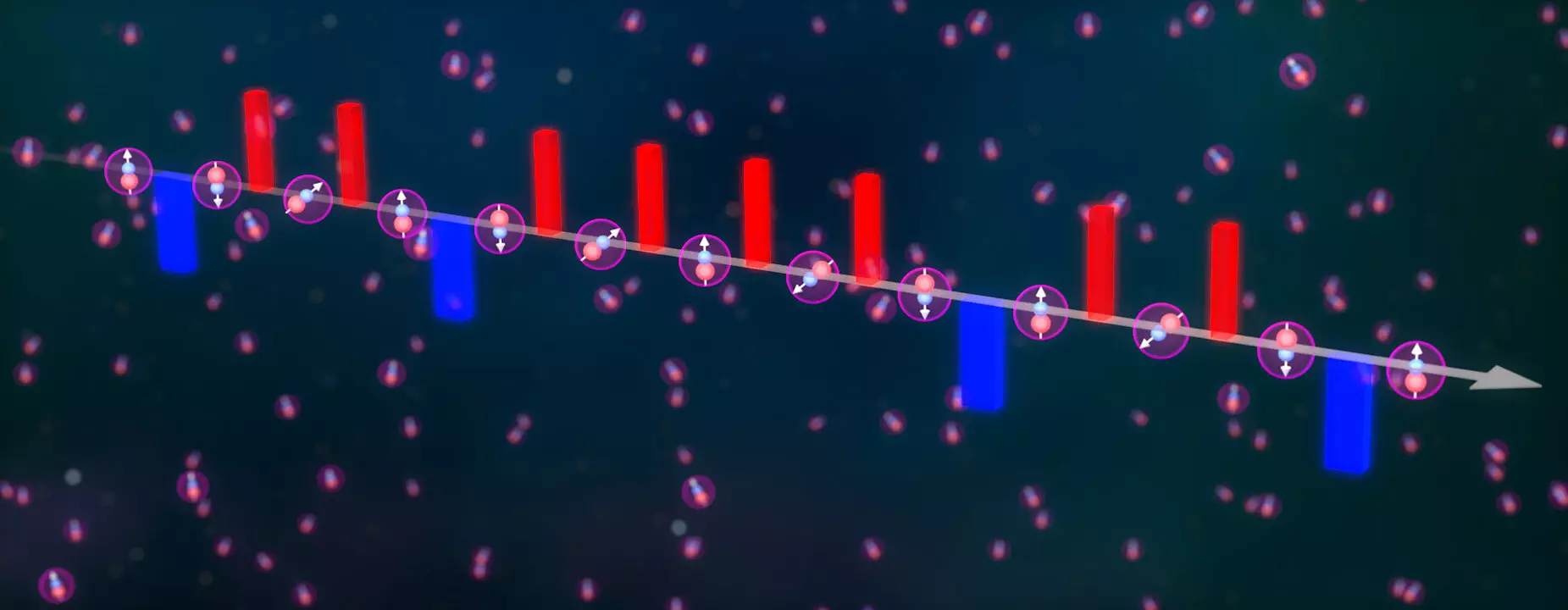Quantum mechanics, the foundation of modern physics, presents many intriguing phenomena, particularly in the domain of quantum spins. These spins not only govern the behavior of magnets but also influence the principles behind superconductors. Nevertheless, the challenge of recreating and controlling these quantum spin interactions in laboratory settings remains a significant hurdle for physicists. Recent advancements by a team led by Jun Ye at JILA and collaborators at Harvard University have marked a turning point in this quest, leveraging cutting-edge techniques to manipulate ultracold potassium-rubidium molecules.
At the heart of this groundbreaking research lies Floquet engineering, a technique that utilizes periodic microwave pulses to modulate interactions within quantum systems. This methodology can be likened to a “quantum strobe light,” illuminating avenues to create diverse quantum effects through meticulous control over particle interactions. Previous setups limited researchers by the number of pulses they could implement; however, advancements in electronic engineering allowed Ye’s team to adopt an FPGA-based arbitrary waveform generator. This innovation enabled the application of thousands of pulse sequences, significantly enhancing their experimental capabilities.
By combining sophisticated technology with theoretical insights, the researchers succeeded in addressing single particle noise while also fine-tuning the interactions inherent to the molecular system. The concept of interaction tuning is critical, as it leads to a better understanding of quantum states that emerge through associations between particles.
One of the unique aspects of this investigation was the focus on polar molecules, particularly ultracold potassium-rubidium pairs. These polar molecules present an exciting platform for quantum simulations due to their complex energy states influenced by various physical constants. As JILA graduate student Calder Miller articulated, tuning the interactions of these molecules may unveil new physics and enhance sensitivity to novel quantum phenomena. Consequently, the utilization of Floquet engineering not only provides a method for controlling interactions but also opens the door to future advancements in quantum computation and beyond.
To explore the nuances of quantum interactions, the researchers initiated their experiment by encoding quantum information into the two lowest rotational states of the potassium-rubidium molecules. This critical step harnessed an initial microwave pulse to induce a quantum superposition of these “spin” states. With the encoded information in place, the next phase employed Floquet engineering to manipulate specific types of quantum interactions recognized as XXZ and XYZ spin models. These models provide foundational insights into how quantum spins interrelate, essential for understanding magnetic materials and other many-body phenomena.
The experimental approach allows for visualizing molecular interactions through the metaphor of dancers adjusting their movements based on the interactions with their partners. This analogy conceptualizes how molecules “dance,” shifting their pull or push dynamics depending on their neighboring spins. The results demonstrated that through Floquet engineering, the researchers could modulate spin interactions akin to the precision achieved with electric fields—but with added capabilities to orchestrate asymmetric interactions.
Remarkably, the research team unveiled the phenomenon known as two-axis twisting—a process involving the coordinated manipulation of quantum spins along two different directions. This technique is pivotal for creating highly entangled states, enhancing quantum sensitivity crucial for advanced measurements. Such entangled states directly contribute to reducing quantum uncertainty, proving valuable in fields such as spectroscopy.
Miller recounts the excitement of detecting initial signatures of two-axis twisting, a concept first proposed in the 1990s but not realized until this breakthrough. By demonstrating two-axis twisting in their setup, the JILA team not only showcased the potential for dynamic quantum control but also paved the pathway for exploring intricate entanglement phenomena in their subsequent research efforts.
While this research marks a monumental step in quantum spin manipulation, the journey doesn’t halt here. The team aspires to refine their detection methods to validate the generation of entangled states, opening countless possibilities for enhanced quantum sensing applications. The implications of this work extend not only to fundamental physics but also to practical technologies such as quantum computing and sensitive measurement devices.
As physicists unlock the complexities of quantum interactions, the research environment becomes increasingly vibrant, filled with potential discoveries. The innovative experiments conducted by Jun Ye and his collaborators stand as a testament to the relentless pursuit of understanding quantum mechanics, inviting further exploration into the myriad possibilities that await in the realm of quantum spin dynamics.

